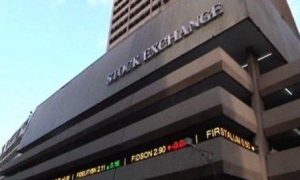Coming off the back of a reform-laden 2023, the Nigerian bourse market kicked off the year high-spiritedly, giving credence to the long-held view that market-friendly reforms, to whatever degree, would cause an upward repricing of Nigerian tickers. The bullish momentum saw the All-Share Index hit the 100,000-point mark for the first time.
In the time since, however, Nigerian equities have pulled back the gains, with the chief factor the higher yields obtainable on short-term fixed-income instruments causing a redirection of flows away from the market and, of course, driving a retrace (or even worsening as applicable) of the previously upwardly trading names. Aside from the more attractive fixed income yields, Nigerian tickers were also punished for their weak corporate earnings, which through no real fault of theirs was fueled by the sizeable FX losses incurred in 2023FY (as well as in Q1-24), on the back of the currency depreciation.
Nigeria’s traipse towards recovery post-reforms has left the investing landscape in a sour mood and could ultimately amplify the length of time before market recovery is cemented. Given this view, our base case for H2-24 points to a muted stock market performance, with smaller gains expected. We believe this will be characterised by intermittent rallies and sell-offs as outside opportunities thin.
The fixed-income market was characteristically volatile in the first half of 2024, with yields (particularly on the short-term papers) trending to pre-2020 levels. This was generally in line with expectations with the now somewhat effective monetary policy transmission signalling higher yields in the CBN’s (and MPC’s) drive to provide carry trade opportunities to drive capital flows and ultimately ensure the disinflationary process. Pertinently, the northward movement in yields has been anything but uniform across assets, as concerns on high debt-servicing to revenue limited expected increase.
Looking forward, we still believe that the monetary policy administration (globally and domestically) and sustained demand-supply imbalance will keep yields elevated. However, we expect relatively lower yields in H2-24, especially as global central banks institute looser policy conditions and as the disinflationary trend in the domestic market kicks in, allowing the MPC hold the key policy rate.
Cordros



























